
— Sam Charlwood
The old saying goes that competition improves the breed – and nowhere is that more evident than in the updated Tesla Model Y.
Amid rampant competition in Australia – not to mention growing political discontent with its founder, Elon Musk, on a broader scale – the Model Y has been thoroughly reworked for 2025 as Tesla seeks to retain its top-selling electric vehicle (EV) status globally.
The changes here are extensive: a refreshed exterior design, overhauled interior, increased driving range plus enhancements to the suspension, steering and noise suppression.
The changes have coincided with incremental price increases.
In any case, park your political persuasions at the door, because the updated Model Y is an objectively impressive piece of kit. More than ever, it is also backed by an impressive charging and supercharger network in Australia, lending a clear advantage.
The 2025 Tesla Model Y range opens at $58,900 plus on-road costs for the base Rear-Wheel Drive (RWD) at the time of writing.
That represents a $3000 increase over its pre-facelift predecessor.
The second variant in the initial Model Y line-up is the Model Y Long Range AWD, which costs $68,900 plus on-road costs (a $1000 reduction).
It’s worth noting those prices exclude on-road costs (stamp duty, registration etc.), as well as Tesla’s $400 order and $1400 delivery fees. Other manufacturers usually include these charges in their RRPs.
Tesla admits the electric SUV landscape has changed vastly since the original Model Y landed in Australia three years ago. The list of current rivals (especially those hailing from China, where the Model Y is also made) is telling. Among them, the BYD Sealion 7 Premium ($54,990 plus ORCs) and XPeng G6 Long Range ($59,800 plus ORCs). There’s also the Kia EV5 Air Standard Range ($56,770 plus ORCs), or from the Europeans, the Skoda Enyaq Sportline RWD ($69,990 plus ORCs) and VW ID.5 GTX ($72,990 plus ORCs).
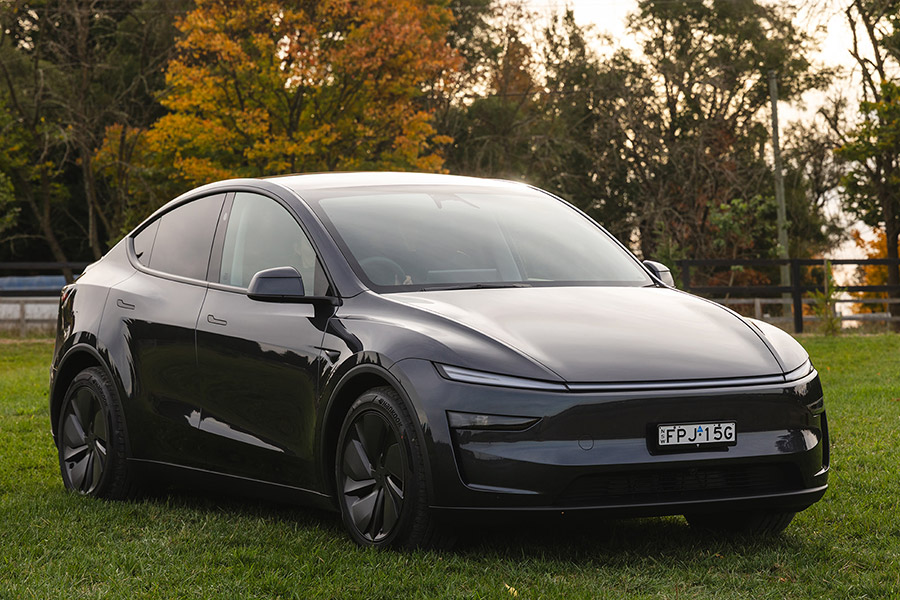
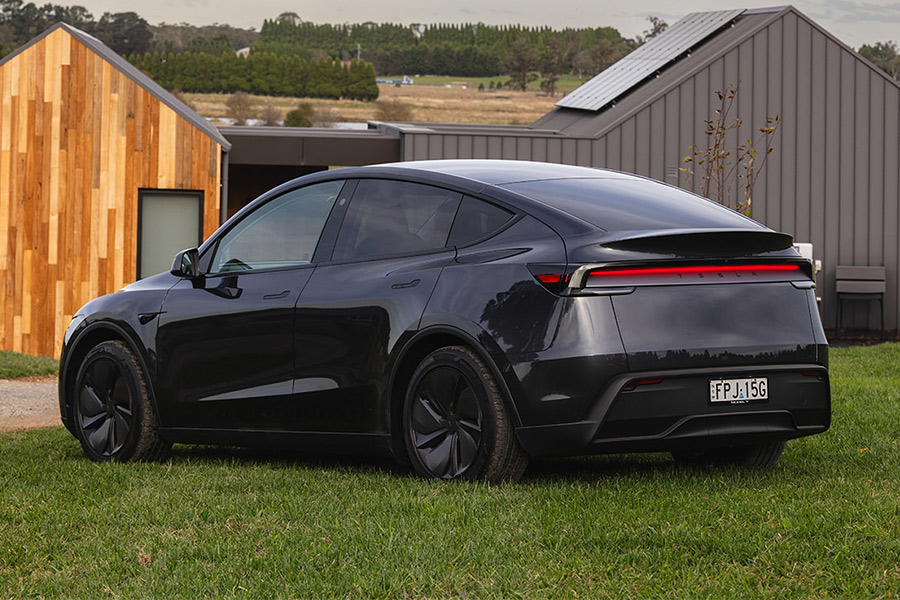
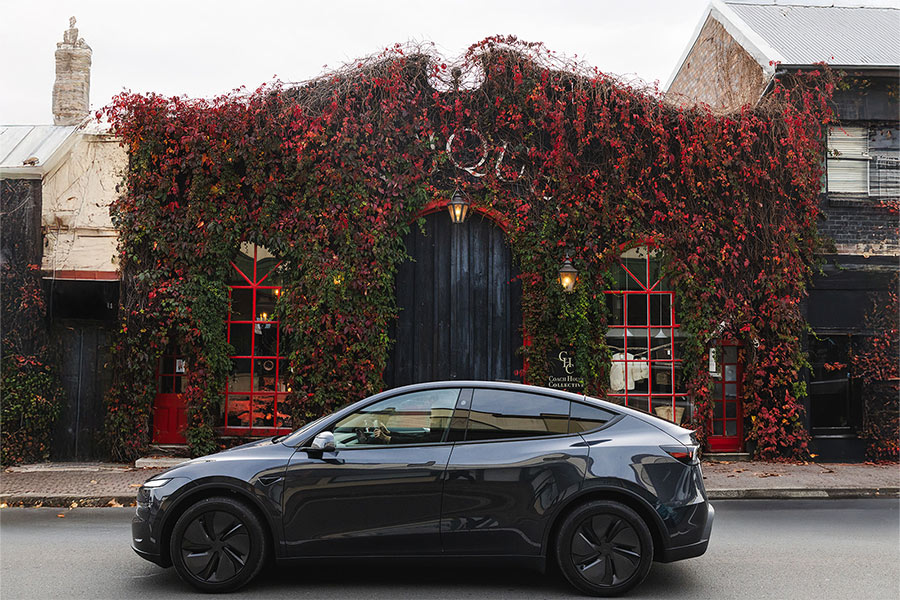
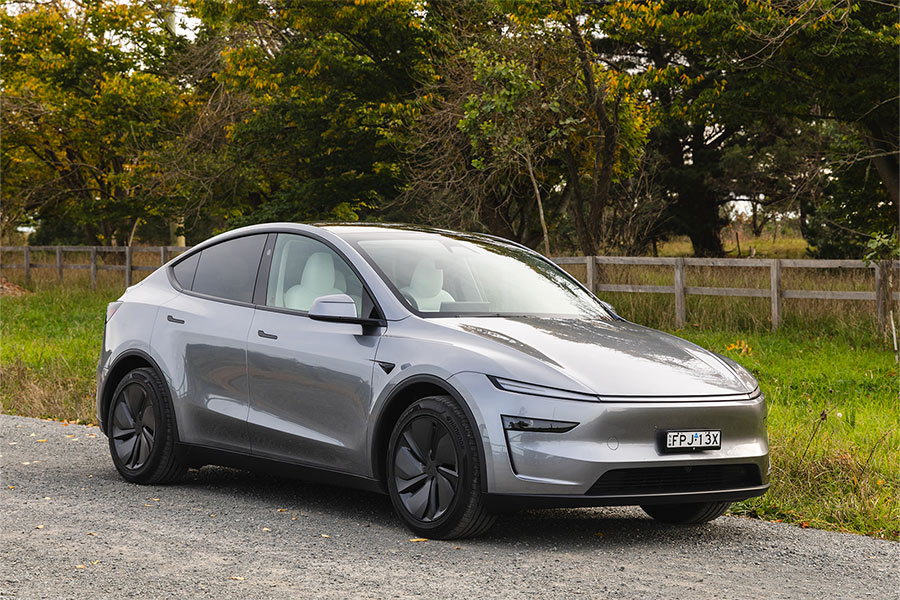
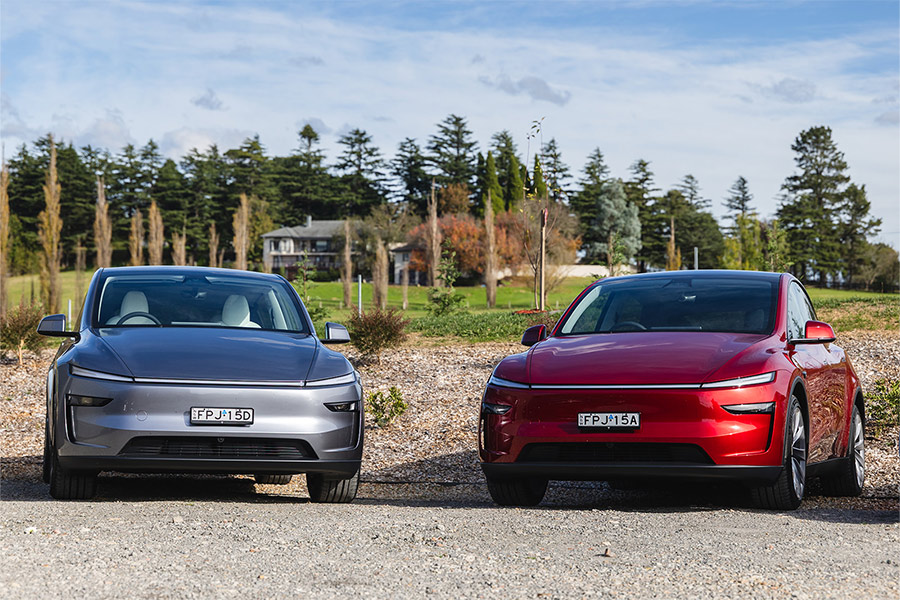
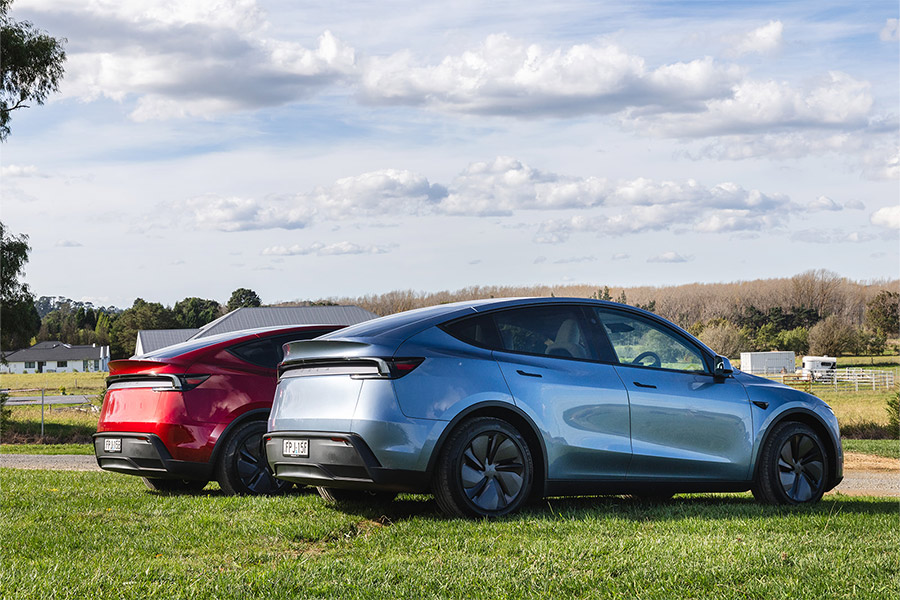
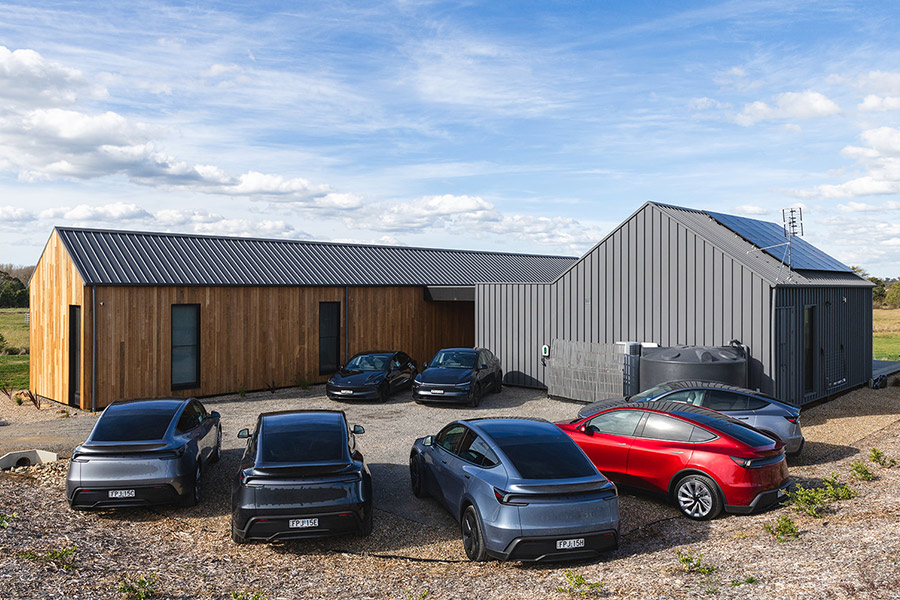
In a word, minimalist.
As before, the Tesla Model Y deviates from traditional interior settings with a decidedly clean façade that is almost totally devoid of traditional buttons, switchgear and even an instrument cluster.
At the national launch, we were encouraged to see the Model Y retains a traditional indicator stalk rather than the divisive steering wheel mounted buttons introduced on the Model 3 sedan in 2024. Interestingly, Tesla took this approach based on customer feedback, according to officials – a bit of a line-in-the-sand moment for the brand, perhaps.
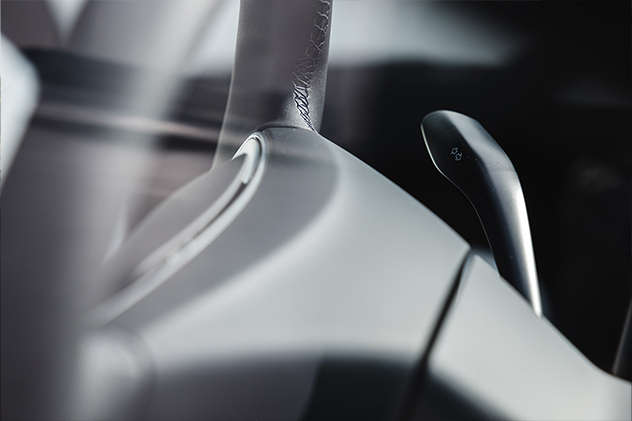
What will be interesting to watch is consumer reaction to the Model Y’s new gear selector which, you guessed it, is now accessed via a slider on the screen.
Elsewhere, the Model Y makes excellent use of its 4.79-metre length. It offers generous proportions across both rows of seating, while a flat floor and cavernous door openings are well suited to parents or carers loading little ones into the rear. The open glasshouse design imbues the Model Y with an airy feel, something further accentuated by its panoramic glass roof (the jury remains out on heat suppression on hot summer days, though – we’re not convinced).
The new 8.0-inch rear screen is a boon for rear back-seat passengers, but a word to the wise: once your little ones cotton-on to its streaming service ability, your in-car conversations will likely never be the same.
Furthermore, those in the rear can now adjust back rest angle even slide the front passenger seat forward and backwards, to maximise leg room.
Up front, the Model Y offers ample adjustment and positioning for the driver (done using the steering wheel controls and a setting within its screen). The seat is low-set and there is excellent outward vision, the one caveat being the bulky A-pillar design, which tends to limit vision through corners.
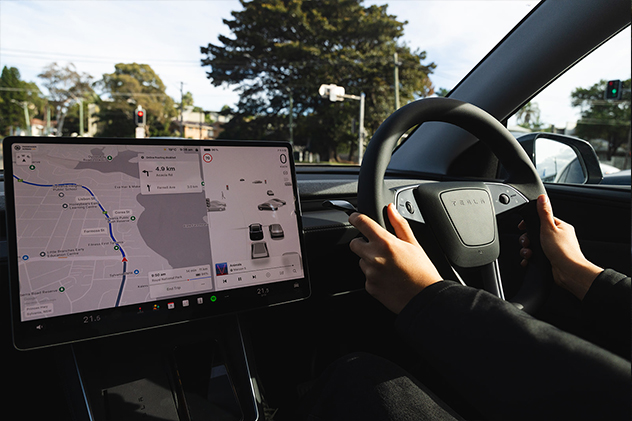
In our minds, its storage is still second to none in this EV space: an excellent spread of open cubbies and compartments, a cavernous boot area replete with underfloor storage and a considerable frunk area. Even a few years into the electric SUV scene, Tesla remains the benchmark with the Model Y.
With that said, as much as Tesla should be applauded for its departure from the norm, there are plenty of instances where Tesla-isms make the Model Y harder to live with. The obvious one is the lack of an instrument cluster (a trait compounded by no head-up display), the fact the cabin is bereft of buttons and dials (making you burrow through screen sub-menus for basic commands) and finally, the absence of Apple CarPlay and Android Auto.
As ever, the centre screen is the beating heart of the Model Y – detrimentally so.
The 2025 Tesla Model Y RWD lands in Australia boasting 19-inch wheels, a new split-matrix LED headlight design and an LED rear light bar, heated and ventilated front seats, perforated synthetic leather trim, heated outboard rear seats, power-folding and reclining rear seats, ambient interior lighting, powered tailgate, keyless entry and start, and a panoramic sunroof.
On the infotainment front there’s the aforementioned 15.4-inch touchscreen with navigation, music streaming and Bluetooth – though still no Apple CarPlay or Android Auto. Furthermore, the 13-speaker audio system from the previous base Model Y has been pared back for a nine-speaker system.
There is some truly innovative tech inside, from Dog mode (for hot days), Sentry mode (great for security and monitoring the car remotely) plus unrivalled connected services for this space.
The Model Y is backed by a sub-par four-year/80,000km warranty in Australia, at a time where five years is now considered an industry minimum.
The high voltage battery gets a separate eight-year, 192,000km warranty (160,000km for RWD models).
The updated Tesla Model Y continues with a five-star ANCAP rating awarded to its predecessor in 2022.
As standard you get seven airbags, autonomous emergency braking, lane keeping assistance, lane departure warning, rear cross-traffic alert and blind-spot warning (which works in concert with cameras which show what’s alongside the car when you activate the indicator).
An in-cabin camera monitors driver attention and, cleverly, detects the size and location of respective passengers.
The Model Y also gets Autopilot, Tesla’s name for self-steering and adaptive cruise control. In addition, Autopilot is also available in two packages – the intermediate Enhanced Autopilot ($5100) or the Full Self-Driving suite ($10,100) which, despite its name, still requires the driver to remain in control the entire time.
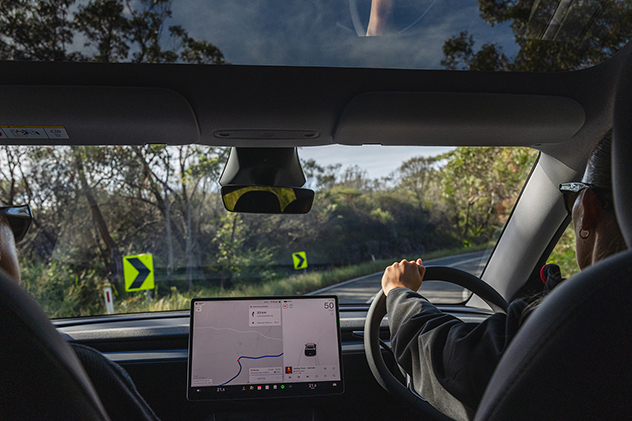
Perhaps the best news on the safety front is that the various systems work benignly but effectively – all except the overzealous lane departure warning suite, which was quite keen to sound its concern on unmarked country roads.
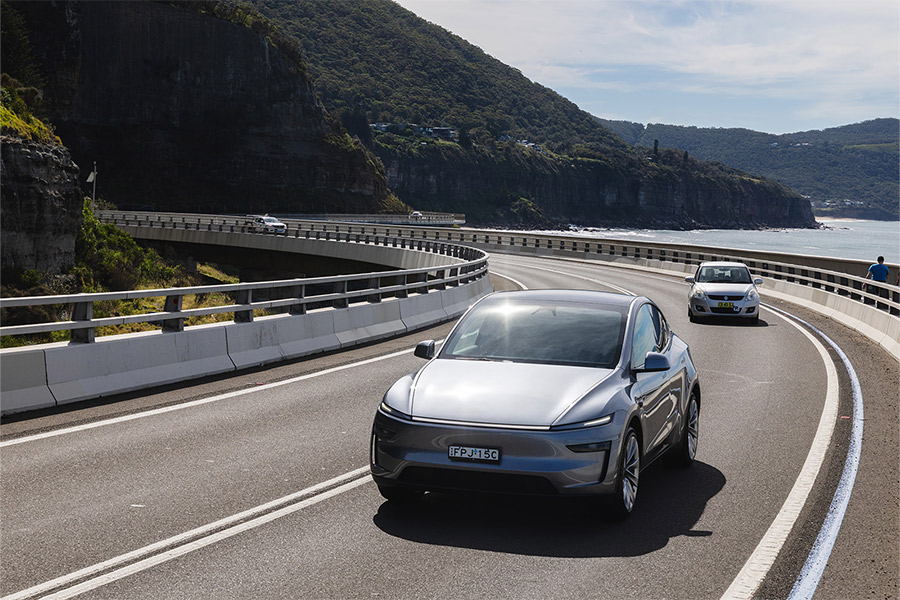


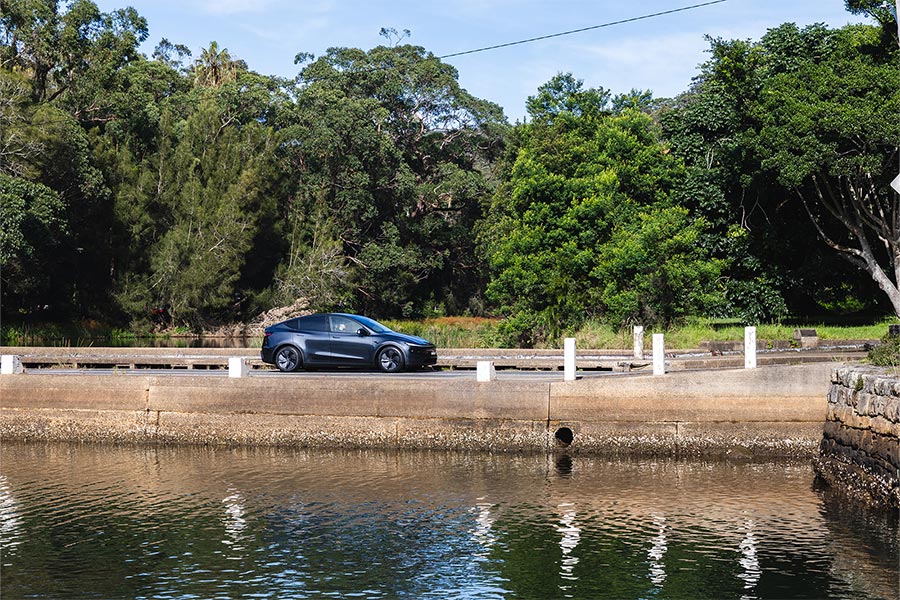
Like or loathe Tesla as a brand, the truth is engineers have made genuine in-roads with the way the Model Y handles.
It was easy to criticise the predecessor’s darty steering and digitised dynamics; it felt like a bit of a white good on wheels. Happily, Tesla has largely corrected course with the 2025 Juniper update.
There’s more meaningful tuning and precision to the steering – in a word, it feels more linear off centre and offers better real-time feedback.
The ride also feels more controlled on mixed surfaces, with new acoustic glass helping minimise noise coming into the cabin.
The throttle pedal modulation and ride characteristics of the entry RWD version are enjoyable, especially in the cut and thrust of Sydney traffic and highway driving.
The car feels as though it breathes over broken bitumen more comfortably, and there’s more control through the stroke of the suspensions.
A long-held gripe is the Model Y’s lack of steering wheel mounted paddles to adjust the amount of regeneration on the go. That continues for 2025, although the native regeneration tuning is more metered (and less likely to make you feel car sick).
Another gripe is around the wooden-feeling brake pedal. It is especially highlighted in this update. On a winding back road south of Wollongong, the Model Y offered balanced dynamics and handling on smooth surfaces – along with pleasant levels of performance. Asking more of the car through tighter corners and undulating surfaces poses more of a challenge, with regular intervention from the electronic stability control suite and an occasional misjudgement in body control.
All things considered, though, the Model Y makes a clear step forward dynamically – well and truly addressing the flaws of its predecessors.
Based on our initial drive, we reckon the RWD is good for its 466km claimed range.
Tesla finds itself in an awkward spot in 2025, and it has nothing to do with its cars.
On merit, there are myriad reasons why the new Tesla Model Y can address a recent sales slide: it’s improved in almost every measure and feels more complete than before.
In a strange way, the Model Y’s improvements feel symptomatic of broader cultural change, too (Elon aside). At the national launch there was evidence of officials listening to the customer base, offering more transparency, and acknowledging the growing band of SUV rivals.
Competition improves the breed, indeed. The new Model Y is proof.